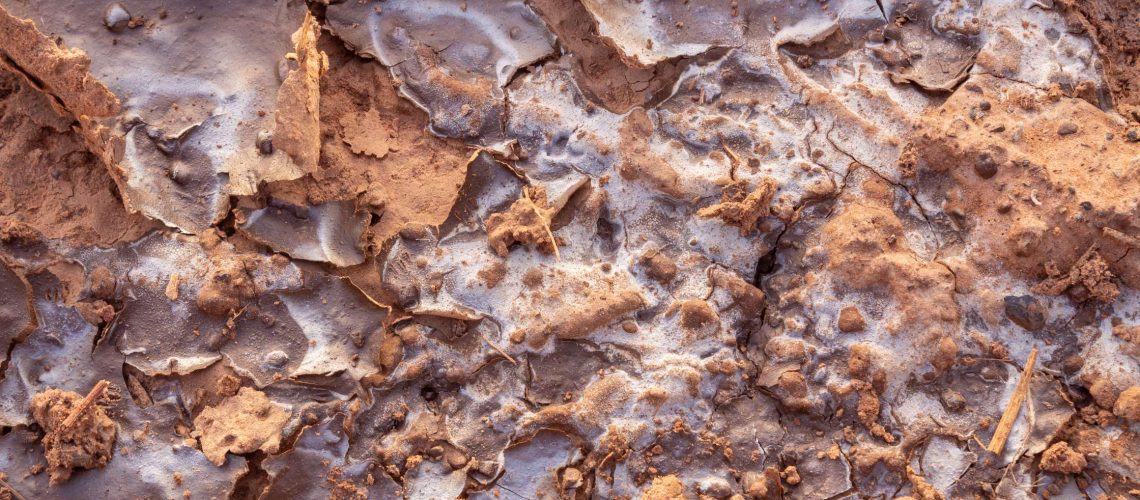Soil salinity may be undermining our food security in increasingly critical ways that you might not be aware of. Given the growing global population and the rising demand for food, it’s crucial to examine how excessive salt in the soil impacts crop yields and agricultural sustainability.
The implications of this issue go beyond farming practices; they also affect economic stability and social structures. What innovative solutions can we explore to address this silent threat?
Understanding Soil Salinity
Soil salinity, a critical issue affecting agricultural productivity, occurs when excess salts accumulate in the soil, disrupting its natural balance.
You need to understand various salinity measurement techniques to assess the problem accurately. Employing effective soil remediation methods can help restore soil health and fertility.
Consider planting salt-tolerant crops, as they can thrive in saline conditions while minimizing yield loss. Additionally, pay attention to the biochemical soil properties, as they influence nutrient availability and plant growth.
Implementing proper irrigation management practices is crucial; using techniques like drip irrigation can reduce salt accumulation by minimizing water evaporation and runoff.
Natural and Human-Induced Causes
Excess salts in your soil can stem from both natural processes and human activities.
Naturally, primary salinization occurs from salt sources like parent materials and seawater intrusion. However, human-induced factors often exacerbate the problem.
Poor irrigation practices, particularly using low-quality water, can lead to secondary salinization, increasing salt concentration in your soil. Additionally, the heavy use of chemical fertilizers contributes to this issue, raising salinity levels.
Drainage issues also play a significant role; inadequate drainage causes water to accumulate, leaving salts behind as it evaporates.
Challenges in Arid Regions
Navigating the challenges of arid regions can be daunting for farmers and agricultural planners.
Utilize effective salinity measurement techniques to monitor soil salt levels. Implementing smart irrigation management practices can help reduce salinity by minimizing water evaporation and optimizing moisture delivery.
Implementing soil amendment strategies, like adding organic matter, can improve soil structure and fertility. When selecting crops, consider crop selection criteria that prioritize salt-tolerant varieties to enhance resilience.
Don’t overlook ecosystem restoration approaches; they can significantly improve soil health and water retention.
Impact on Plant Health
Salinity has a significant impact on plant health, affecting growth and overall productivity. When you face high salt concentrations, plants struggle with salt stress due to osmotic effects that limit water uptake.
You might notice wilted plants as their roots fail to absorb enough moisture. To cope, plants develop salinity tolerance by employing various root strategies, such as storing excess ions or flushing salts to their leaf tips.
This adaptation can help mitigate some damage, but it often comes at the expense of nutrient uptake, resulting in reduced yields. Visible signs of salt stress include burnt leaf tips and stunted growth.
Understanding these effects is crucial for managing crops and ensuring sustainable food production in areas affected by salinity.
Future Threats to Food Security
The increasing prevalence of soil salinity poses a significant threat to global food security. As the global population continues to rise, the demand for food increases, putting immense pressure on agricultural sustainability.
Climate adaptation becomes crucial as shifting weather patterns exacerbate salinity issues. Without effective policy interventions, you may face challenges in maintaining crop yields and ensuring food supply.
Technological innovations, such as improved irrigation methods and salt-resistant crops, are vital to combat these threats. However, if you don’t address the salinity problem now, future agricultural practices may struggle to keep pace with the needs of a growing population.
Thus, it’s essential to prioritize actions that safeguard food security against the looming threat of soil salinity.
Mitigation Strategies and Solutions
How can we effectively combat soil salinity to protect our food systems? You can implement several strategies to manage salinity effectively.
Begin by conducting regular soil tests to monitor salinity levels and identify areas of concern. Incorporate crop rotation to diversify crops, improving soil health and resilience. Using organic amendments can enhance soil structure, promoting better drainage and reducing salinity.
- Imagine healthier crops thriving in nutrient-rich soil.
- Envision stronger communities with reliable food supplies.
- Picture a sustainable future for our environment and agriculture.
Lastly, investing in efficient drainage systems can help prevent salt accumulation, ensuring your crops flourish.
Together, these solutions can significantly mitigate the threats posed by soil salinity and protect our food security.
Empowering Sustainable Agriculture in Southwest Florida
Addressing soil salinity is vital for securing our food future, and Southwest Florida Service & Supply is at the forefront of this challenge.
With our expertise in agricultural irrigation systems, well water management, trailer shop repair, and backflow prevention, we are committed to equipping our clients with the tools and knowledge necessary to address this pressing issue. By investing in efficient irrigation solutions and reliable water systems, we empower farmers to optimize their yields and reduce the impact of salinity on their crops.
Let us help you cultivate a sustainable future for your agricultural endeavors. Together, we can ensure that the land remains fertile and our communities thrive. How will you partner with us to enhance your farming practices?

